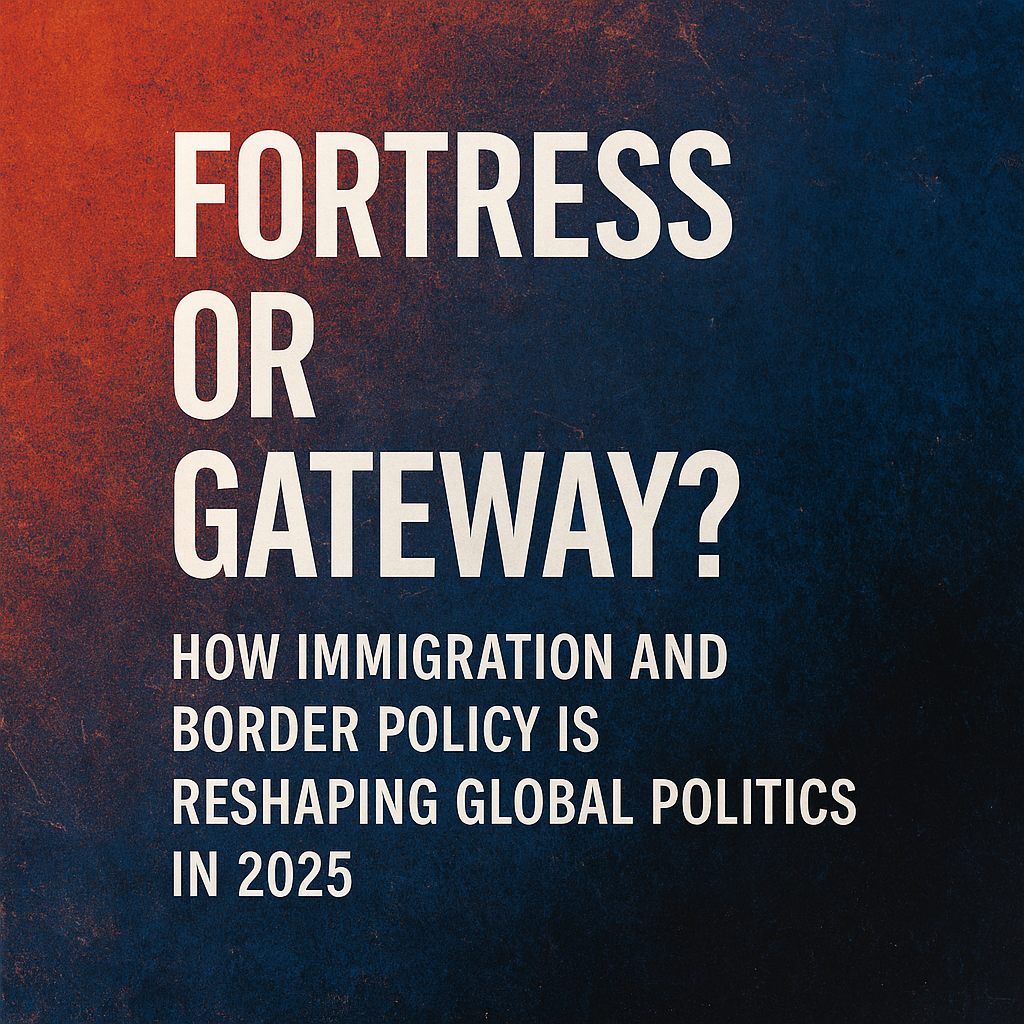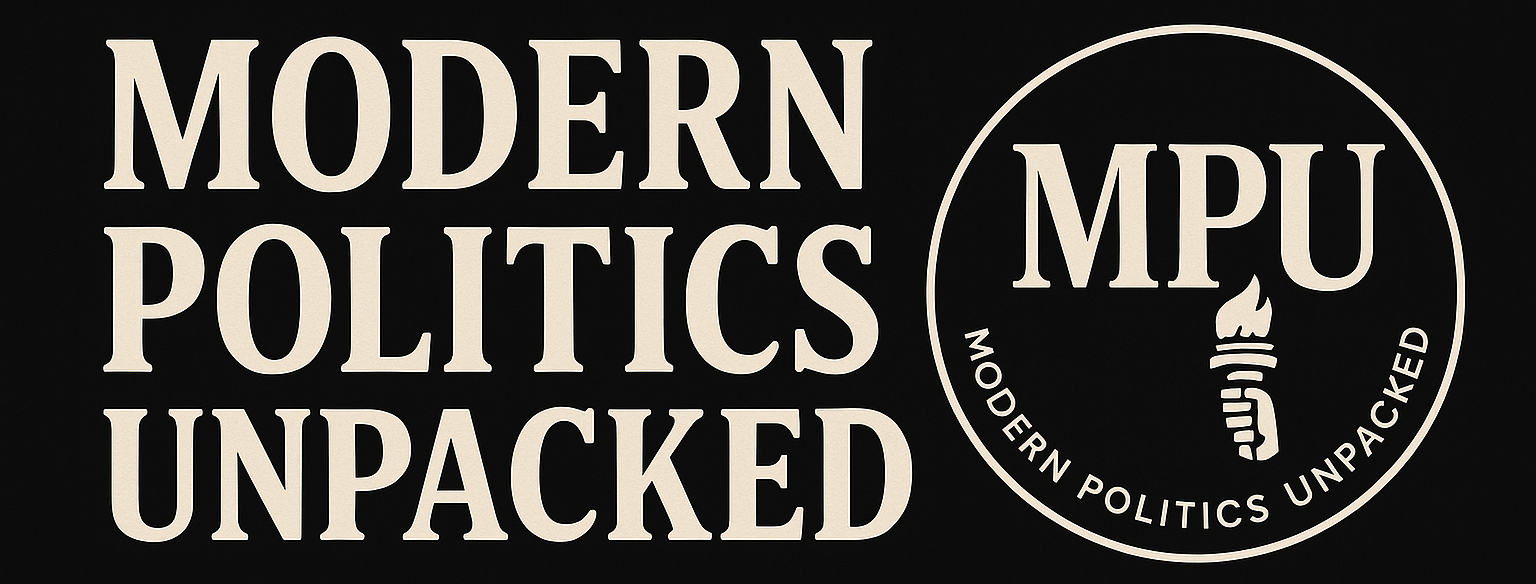Fortress or Gateway? How Immigration and Border Policy Is Reshaping Global Politics in 2025

Immigration has become one of the most defining—and divisive—political issues of the 21st century. In 2025, the global conversation around who gets to cross borders, under what conditions, and for what reasons has reached a boiling point.
From the U.S.–Mexico border to the Mediterranean Sea, governments are tightening immigration controls, building walls (physical and legal), and facing both humanitarian and political backlash. Meanwhile, wars, climate disasters, and economic collapses continue to displace millions, driving migration to levels not seen since World War II.
This article examines:
- Why immigration is such a flashpoint in today’s politics
- How governments in the U.S., Europe, and elsewhere are reshaping policies
- The humanitarian consequences of these shifts
- How the immigration debate is influencing elections and public opinion
- What future models of border governance might look like
1. A World on the Move
Migration is not new—but the scale and speed are unprecedented. The UN reports that over 117 million people are currently displaced, including 40+ million refugees and asylum seekers.
Drivers of mass migration:
- Armed conflict: Syria, Ukraine, Sudan, Gaza
- Climate change: Rising seas, drought, and flooding displacing rural populations
- Economic hardship: Inflation and debt crises in Argentina, Lebanon, Nigeria
- Political persecution: Afghanistan, Iran, Venezuela
In this context, migration is no longer a marginal issue—it’s a central driver of domestic and foreign policy in nearly every developed nation.
2. United States: The 2025 Border Flashpoint
Immigration has become one of the most potent political tools in American discourse. With the 2024 election in the rearview mirror, President Biden and Republican challengers remain deeply divided over what to do at the southern border.
Biden's Balancing Act
- Increased deportations of migrants without valid asylum claims
- Expansion of CBP One, a mobile app for asylum seekers to schedule processing
- Creation of new humanitarian parole programs for Cubans, Haitians, Nicaraguans, and Venezuelans
- Cooperation with Mexico to slow northbound migration
Yet Biden has faced criticism from both sides: Republicans accuse him of creating an “open border,” while progressives decry the continued use of Title 8 expulsions and detention centers.
The GOP Hardline Stance
- Calls for mass deportations and expansion of border wall infrastructure
- Pledges to deploy the military to secure the southern border
- Legal efforts to reclassify NGOs as “smugglers” for aiding asylum seekers
- Proposals to strip birthright citizenship for children of undocumented immigrants
Immigration remains a top-three issue among Republican voters, with “border security” a common refrain on campaign trails.
“If you don’t have a border, you don’t have a country.”
— Former President Donald Trump, CPAC 2024
3. Europe’s Fortress Mentality Returns
Across the Atlantic, Europe is experiencing its own migration crunch. In 2024, over 250,000 irregular arrivals reached the EU—many crossing the Mediterranean on dangerous smuggling routes.
Key Trends:
- Surge in asylum seekers from Syria, Afghanistan, and Sudan
- Climate refugees from the Sahel and Horn of Africa
- Shifting migration routes through Belarus, Libya, and the Balkans
The Political Response:
- Italy has restricted NGO rescue missions in the Mediterranean and signed controversial deals with Tunisia and Libya to intercept boats.
- UK passed legislation to deport asylum seekers to Rwanda, despite legal challenges and public protests.
- Germany has reintroduced border controls with Poland and Czechia amid far-right pressure.
- Greece continues to build fortified walls and expand surveillance along the Turkish border.
“The age of naivety is over. Europe must protect itself.”
— Giorgia Meloni, Italian Prime Minister
This hardening stance reflects rising xenophobia and political polarization. Far-right parties like France’s National Rally, Germany’s AfD, and Hungary’s Fidesz have made immigration central to their platforms—and are gaining electoral ground.
4. Refugees, Not Criminals: The Humanitarian Crisis at the Borders
While governments tighten their borders, millions of migrants face worsening conditions:
At the U.S.–Mexico Border:
- Over 2 million encounters reported in 2024
- Tent camps in cities like Tijuana, Reynosa, and El Paso
- Reports of family separations, underage detentions, and poor sanitation
In the Mediterranean:
- At least 3,000 migrants drowned crossing from North Africa in 2024
- Survivors detained in inhumane Libyan detention centers
- Frontex (EU border agency) accused of “pushbacks” in Greek waters
In the UK:
- Asylum seekers housed in barges and military bases
- Delays of months or years in processing asylum claims
The UNHCR and Red Cross warn that the politicization of migration is leading to a moral collapse in how refugees are treated.
5. Immigration as a Political Weapon
Immigration is no longer just a policy issue—it's a cultural and ideological battleground.
In the U.S.:
- Immigration is used to stoke fears about crime, labor competition, and "great replacement" theories.
- Right-wing media repeatedly link migrants to fentanyl trafficking, despite lack of evidence.
- “Invasion” language once used only on fringe forums is now common in mainstream GOP rhetoric.
In Europe:
- Populist leaders frame migration as a civilizational threat.
- Hungary’s Viktor Orbán has turned the EU migration debate into a case study in illiberal governance.
- In the UK, anti-migrant sentiment was central to Brexit and remains a divisive cultural issue.
Yet public opinion is not monolithic. Polls show:
- Majority of Americans support legal immigration reform
- Europeans are more willing to accept refugees than economic migrants
- Youth in both continents view immigration more favorably than older generations
6. Alternatives and Innovations in Border Policy
While many countries are hardening borders, others are exploring more nuanced or humanitarian approaches.
Canada:
- Maintains a points-based immigration system
- Admits over 400,000 newcomers annually, including record numbers of refugees
- Faces pressure on housing and services, but public support remains relatively high
Colombia:
- Granted legal status to over 2 million Venezuelan migrants
- Internationally praised for humanitarian leadership, despite domestic strain
EU Blue Card Reform:
- Efforts to streamline legal migration for skilled workers
- Aimed at countering demographic decline and labor shortages
Some cities, like New York, have declared themselves “sanctuary cities”, resisting deportation cooperation with federal authorities. Critics argue this encourages illegal entry, while supporters say it preserves basic human rights.
7. Climate Migration: The Coming Storm
According to the World Bank, up to 216 million people could become climate migrants by 2050. Rising seas, failing crops, and natural disasters are already pushing people to migrate within and across borders.
Emerging hot spots:
- Bangladesh: Displaced by monsoons and sea-level rise
- Sub-Saharan Africa: Drought-driven displacement
- Central America: “Dry corridor” forcing farmers off the land
Yet current asylum laws do not recognize climate refugees as a protected category under international law. Experts warn this legal gap will exacerbate global instability, as displaced populations lack formal rights or protections.
8. What’s at Stake: Human Rights, Labor, and Social Cohesion
Immigration isn’t just a matter of national security—it intersects with:
- Labor markets: Many economies depend on migrant workers in agriculture, healthcare, and logistics.
- Demographics: In aging societies like Germany and Japan, immigration is key to economic sustainability.
- Cultural identity: Heated debates around assimilation, integration, and multiculturalism
- Civil rights: Expanded surveillance and legal exceptions at borders can erode democratic norms
“Borders are where democracy is tested—and too often, it fails.”
— Helena Maleno, Spanish migration activist
9. The Future of Border Politics
As the world faces more migration pressures, governments will be forced to choose between isolation and adaptation.
Possible paths forward:
- Regional cooperation (like EU resettlement schemes) instead of unilateral crackdowns
- Legal migration channels to reduce irregular crossings
- Digital border tech: Facial recognition, AI risk assessments (raising privacy concerns)
- Climate migration frameworks under UN and World Bank leadership
Without coordinated efforts, analysts warn we risk entering an era of permanent migration crisis, with rising xenophobia, political instability, and humanitarian failures.
Conclusion: Migration Defines the Moment
In 2025, immigration is more than a political issue—it is a test of global solidarity, moral responsibility, and national identity. Whether driven by war, poverty, or climate disaster, people will continue to move. The real question is whether the political systems in place can manage this human reality with fairness, compassion, and pragmatism.
As walls rise and rhetoric hardens, so too does the need for bold, humane leadership. The future of border policy isn’t just about who gets in—it’s about who we become as societies when confronted with suffering at our gates.
Sources & Further Reading
- UNHCR Global Trends: https://www.unhcr.org
- Migration Policy Institute: https://www.migrationpolicy.org
- U.S. Customs and Border Protection: https://www.cbp.gov
- Pew Research Center Immigration Polls: https://www.pewresearch.org
- International Organization for Migration: https://www.iom.int
- Human Rights Watch: https://www.hrw.org
